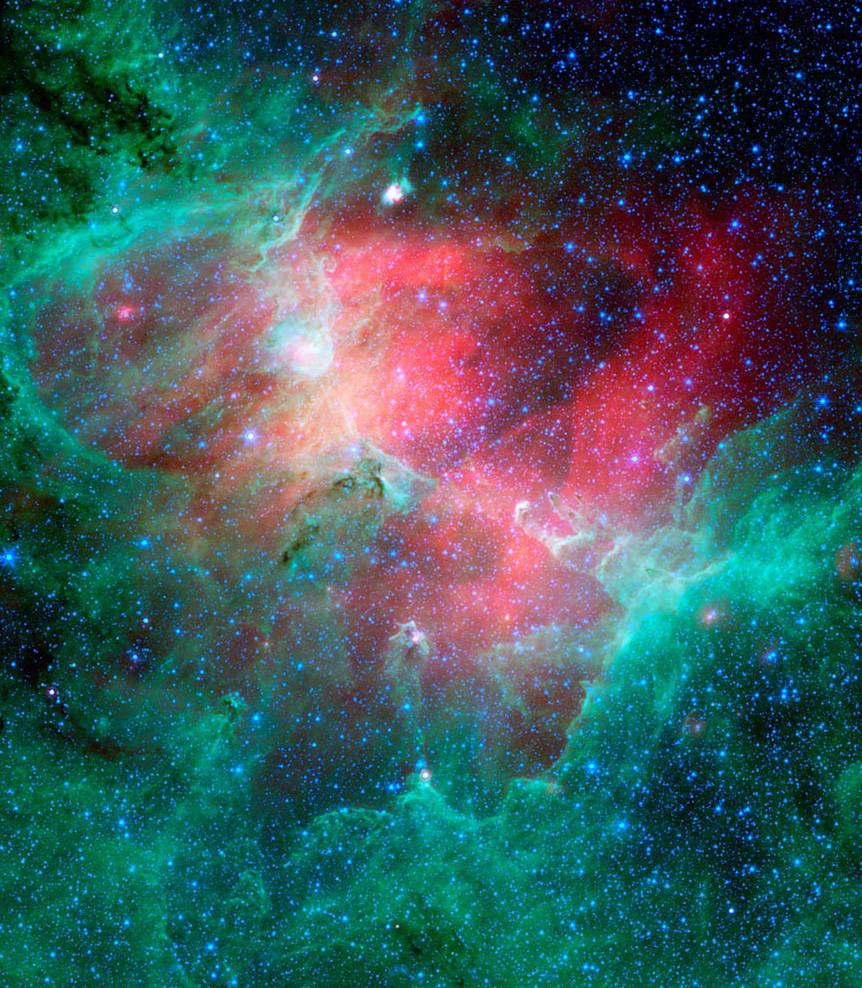
This majestic view, taken by NASA’s Spitzer Space Telescope, tells an untold story of life and death in the Eagle Nebula, an industrious star-making factory located 7,000 light-years away in the Serpens Constellation. The image shows the region’s entire network of turbulent clouds and newborn stars in infrared light.
The color green denotes cooler towers and fields of dust, including the three famous space pillars, dubbed the “Pillars of Creation,” which were photographed by NASA’s Hubble Space Telescope in 1995 (right of center; see https://www.nasa.gov/mission_pages/spitzer/multimedia/ssc2007-01b.html for exact location).
But it is the color red that speaks of the drama taking place in this region. Red represents hotter dust thought to have been warmed by the explosion of a massive star about 8,000 to 9,000 years ago. Since light from the Eagle Nebula takes 7,000 years to reach us, this supernova explosion would have appeared as an oddly bright star in our skies about 1,000 to 2,000 years ago.
According to astronomers’ estimations, the explosion’s blast wave would have spread outward and toppled the three pillars about 6,000 years ago (which means we wouldn’t witness the destruction for another 1,000 years or so). The blast wave would have crumbled the mighty towers, exposing newborn stars that were buried inside, and triggering the birth of new ones.Image credit: NASA/JPL-Caltech/ Institut d’Astrophysique Spatia


























